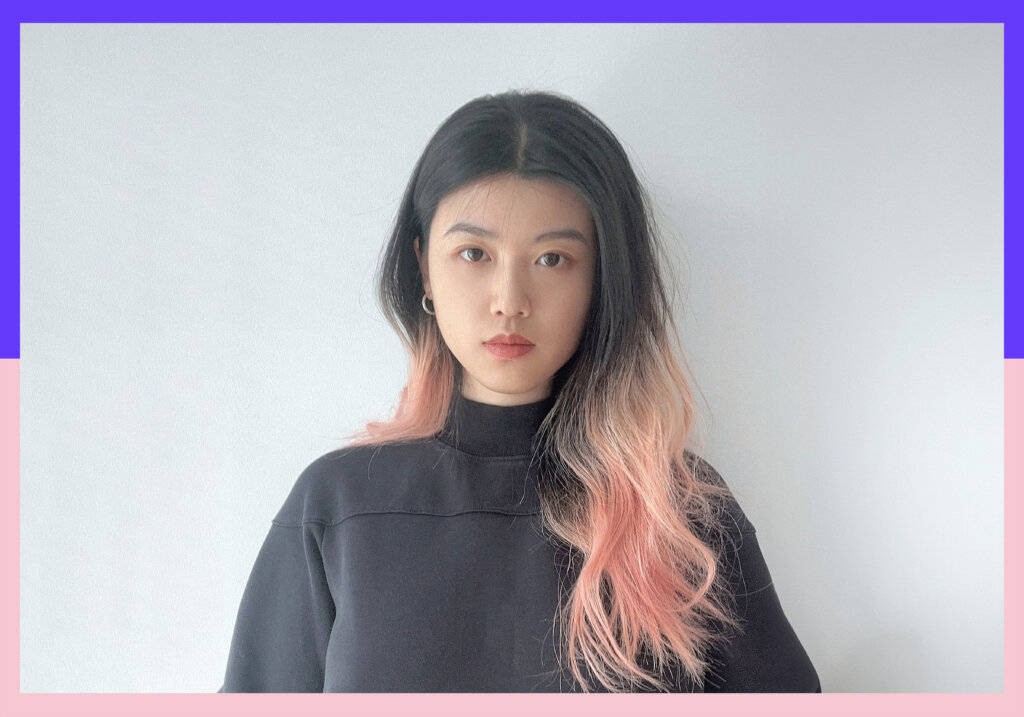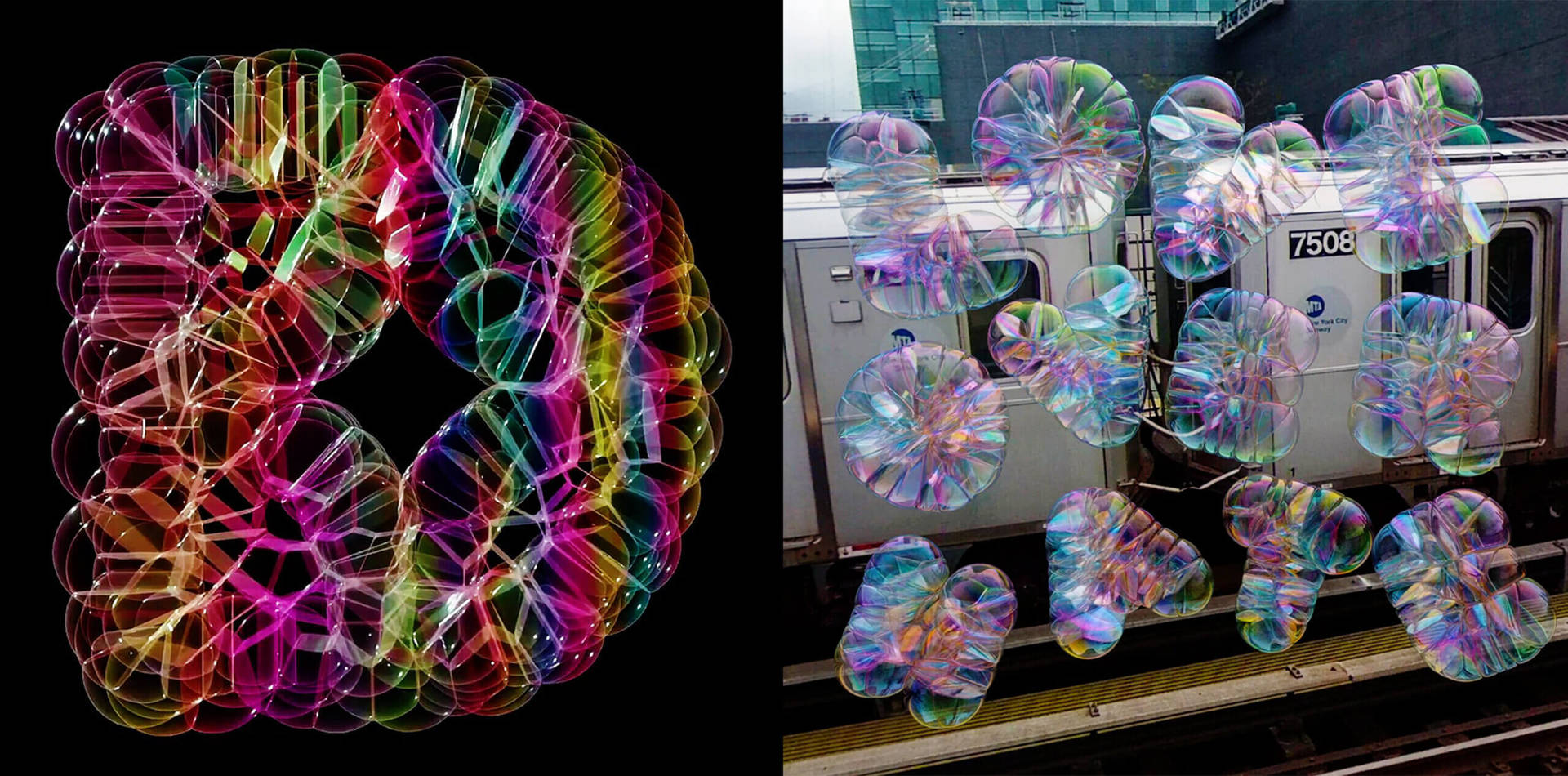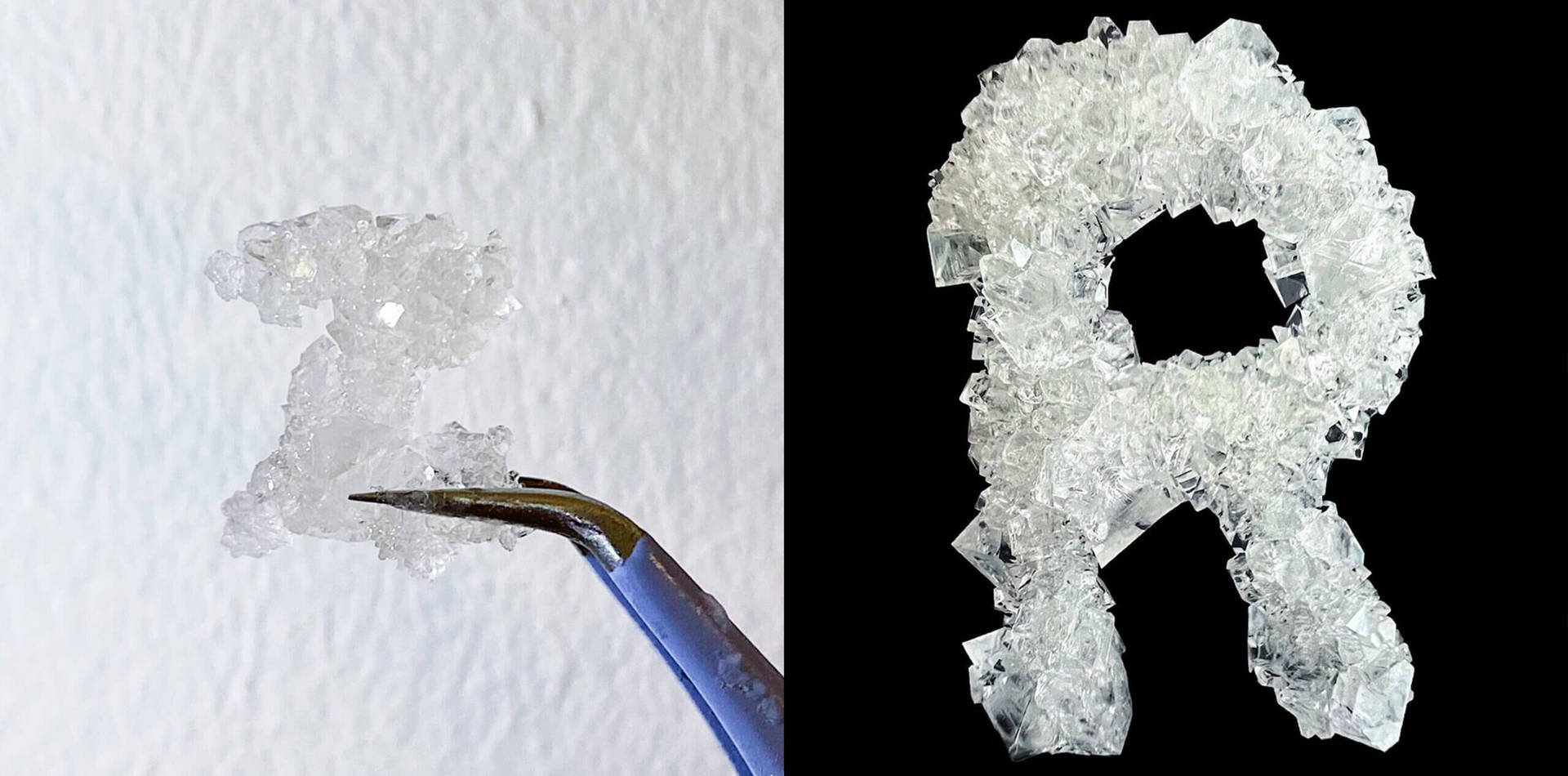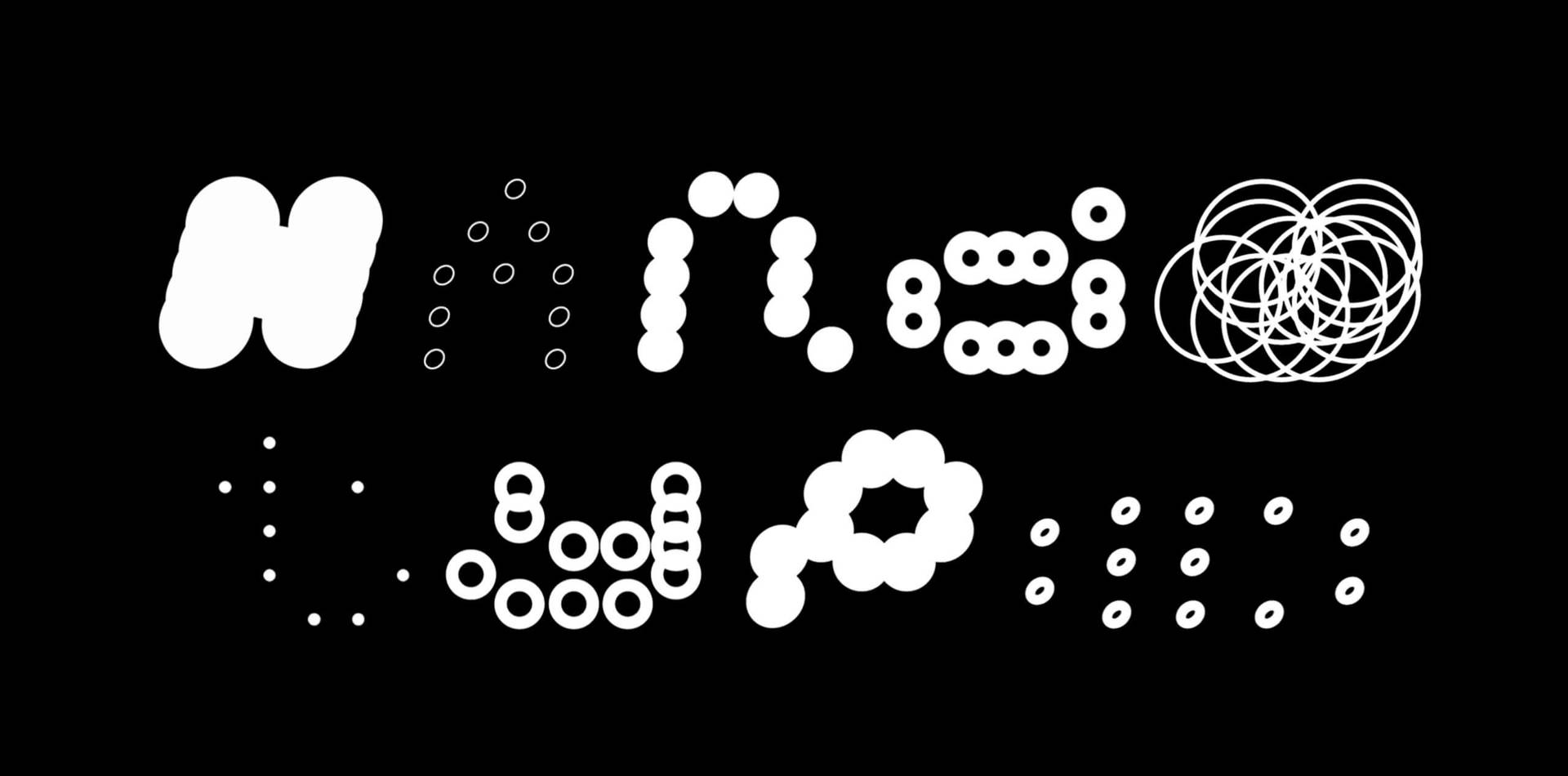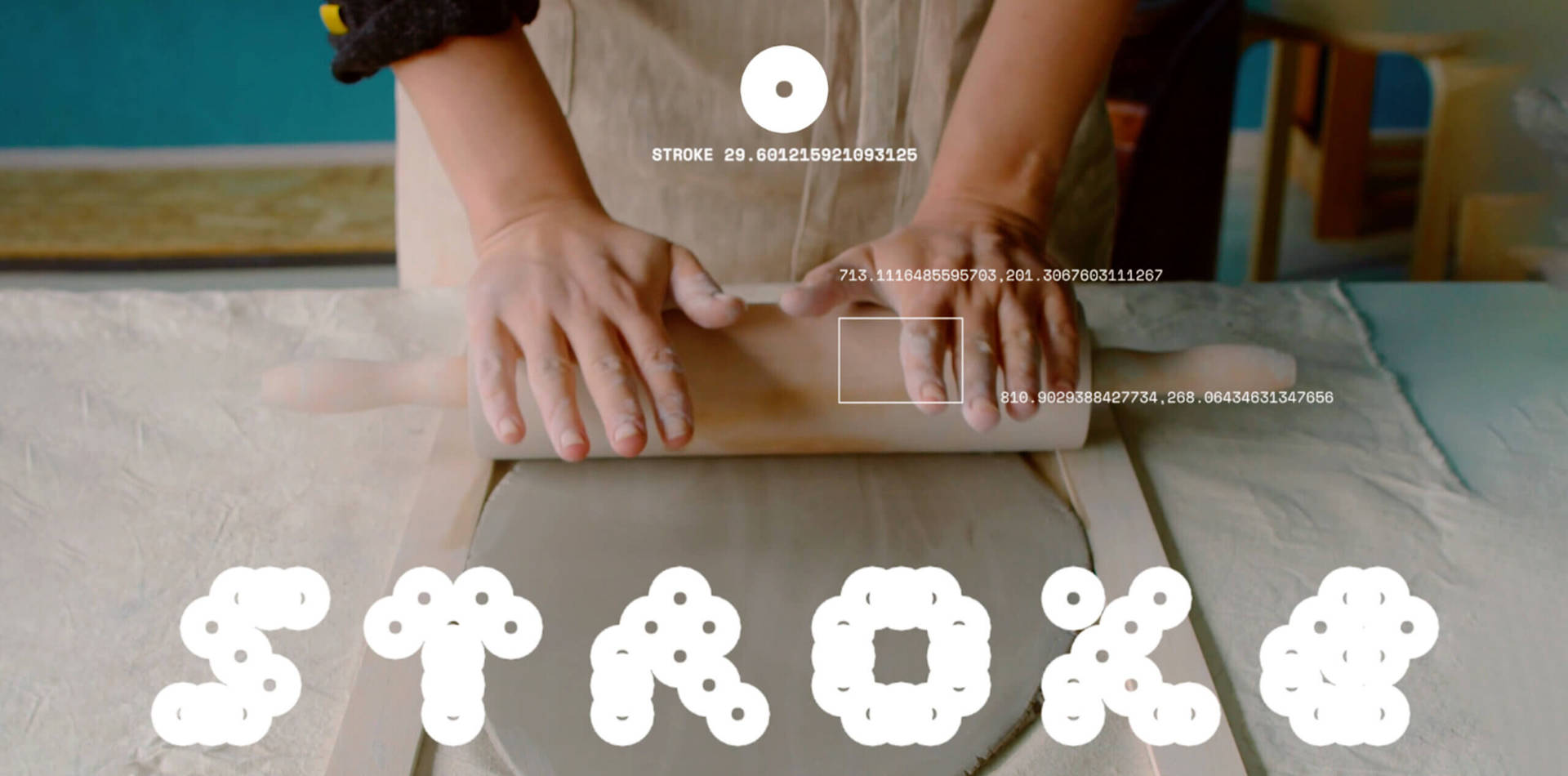Multi-disciplinary designer Rozi Zhu is interested in the exploration of new creative technologies primarily through the medium of typography. Believing that the development of the discipline of design is inseparable from the advancement of technology, her practice is centered around experimentation, which has led to client work with the likes of Dior and Meta.
Seeing typography as a fundamental component of graphic design, Rozi pushes boundaries in her personal practice which in turn feeds into her commercial work. Recent projects have included a typeface inspired by an exploration of the magnetic potential of ferrofluid and interactive typeface Handy Type, which uses hand tracking data to craft variable fonts.
With a keen interest in coding, AR technology and interactive design, Rozi describes her creative process as a continuous cycle of inquiry and problem-solving. She firmly believes that breaking away from familiar methodologies and embracing new ways of working with technology in design paves the way for groundbreaking creative solutions.

We recently chatted with Rozi to find out more about her career so far, pushing the boundaries of design through embracing technology and advice for emerging creatives.
Firstly, can you tell us a bit about your creative career path and how you got to where you are now?
I started my design journey at Dazzle Studio in New York City. During my time there I worked with Zipeng Zhu, who is the founder and director of Dazzle Studio, I broadened my skill sets and worked on a variety of projects including, graphic design, branding, packaging, motion, 3D, Face Filter, and typography. An example project was exploring AR filter design skills in our MCKL AR Type project and School of Visual Art ‘Art Is Back’ projects.
These projects later led me on to the Dior Campaign, ‘Dream In Dior’, AR experience project. As my design journey progressed, each experience built upon the last, influencing one another in a wonderfully interconnected way.
How would you describe yourself as a designer and your creative practice?
I consider myself highly multi-disciplinary and have a strong affinity with technology in my practice. I’m constantly exploring the use of different media in my design.
In my personal experimental projects, I delve into research, exploration, and unique techniques, which lead to creating advanced and innovative works that push the boundaries of current design. Some of these projects also find their way into commercial use. For instance, my exploration of ferrofluid not only resulted in my award-winning project, Ferrofluid Type, but also led to a commercial endeavor with animation studio Qie Media. I created a logo animation for them using ferrofluid, controlled by coding and physical computation, which was previously unheard of in logo animation.
Experimental typography is often at the center of your personal work, where does this interest come from, and does it feed into client/commercial work?
In fact, the advancement of all disciplines is inseparable from the development of technology. Typography, as one of the most important components of graphic design, is no exception. The typography designs today should not and cannot mirror those of the 70s or 80s, given the continuous evolution of our methods, techniques, materials, and tools. While not every commercial project may readily embrace avant-garde or original designs, I persist in exploring innovative experimental typography using the most cutting-edge technology, as it benefits and advances the entire design industry.
“I persist in exploring innovative experimental typography using the most cutting-edge technology, as it benefits and advances the entire design industry.”
What does your creative process when creating experimental and interactive type projects look like?
My creative process typically begins with a simple question in my mind. I constantly ask myself questions, then dive into research to seek answers and learn new knowledge. As I delve deeper, new questions often arise, leading to an iterative cycle of inquiry and problem-solving. Design, for me, is a continuous process of questioning and problem-solving. Throughout this journey, I become more familiar with the theme and steadily refine my work.
You’ve worked with clients like Meta and Dior at BUCK, what was the experience like?
The opportunities to work with clients like Meta and Dior, as well as at BUCK, came about through a combination of factors. BUCK is a highly respected design agency where I had the privilege to work on a variety of multimedia projects. One of these projects was the Dior Campaign ‘Dream In Dior’. Given my skill set in both graphic design and AR filter design, I managed the project’s graphic elements and assets creation, as well as the development of AR filters. This project was particularly significant as it involved six AR effects, including four site-specific experiences in Seoul and Paris, an at-home experience, and a point-of-sale experience across numerous locations. These experiences transformed environments with a blanket of stars, glittering artworks, and ornate visual feasts. It was truly a pleasure to be part of such a monumental project.
Can you tell us about a stand-out project that you’ve worked on and why it’s important to you?
One standout project that holds particular significance for me is Handy Type, a personal project created in 2023, where I worked as both the lead designer and creative technologist. In recent years, there has been considerable attention on the rapid development of AI, and I saw an opportunity to merge this advancement with type design.
Handy Type revolutionizes type design by integrating interactive hand tracking data into its dynamic font creation process, empowering individuals to craft personalized fonts from anywhere, at any time. Through the use of artificial intelligence and machine learning techniques, the end product is a customized system capable of capturing hand-motion data, thus ushering in a new approach to type design. This not only makes the design process more playful and innovative but also enhances the user experience.
What challenges have faced along the way and how have you overcome them?
I find a big challenge is getting lost in the endless stream of commercial projects. Clients often prefer established and familiar design solutions that have already proven successful in the market. However, if we aim to drive progress within the design industry, we must step out of our comfort zone and embrace new skills and the most cutting-edge tools available. I understand that departing from familiar methodologies and design approaches can be daunting, but it’s necessary to pave the way for groundbreaking design solutions.
“Clients often prefer established and familiar design solutions that have already proven successful in the market. However, if we aim to drive progress within the design industry, we must step out of our comfort zone and embrace new skills and the most cutting-edge tools available.”
If you could go back to the beginning and start your career again what would tell your younger self?
I would tell my younger self not to worry too much about the future and to simply follow my heart. The future is unpredictable and constantly changing, so it’s important to cherish one’s passion and happiness in the present moment.
Do you have any words of advice for emerging creatives?
Be yourself. I know many young creatives go through a process of comparing themselves to others and admiring the styles of their peers. However, style is deeply connected to each individual’s background, personal identity, experiences, and interests. Everyone is unique. By staying true to yourself, you will inevitably find your own style.
“Everyone is unique. By staying true to yourself, you will inevitably find your own style.”
Finally, do you have any thoughts on how we can encourage greater diversity and inclusion across the creative industries?
Whilst I was at Dazzle Studio, we often had clients who, despite having limited budgets, were motivated by goodwill, such as non-profit organizations. I believe that engaging in such projects, within our means, can contribute positively to the creative industry.
Visit:
Follow:
- Instagram: @rozi.525
Article by Mary Hemingway
